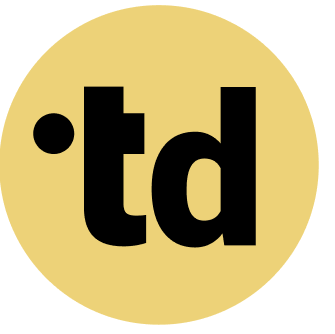Key Takeaways
A workload management tool is a platform for distributing tasks, tracking progress, and balancing team capacity to prevent burnout and boost productivity.
Key benefits include a significant increase in profitability for engaged teams and a measurable improvement in internal collaboration.
Modern tools support hybrid teams (humans and AI agents) by integrating AI agents to automate task allocation and predict bottlenecks.
In today's fast-paced world, teams are the heroes, but even heroes get overwhelmed by the villain of chaotic workloads. Unclear roles and unbalanced tasks lead to burnout, with 11% of employees in Germany working overtime in 2024. This is where a new secret weapon comes in: the workload management tool. It's more than just a task manager; it's a strategic instrument for Team Architects to build resilient, high-performing teams. This guide explores how these tools provide the clarity and flow needed for your team to succeed, especially in a world of distributed work and AI integration.
Practical Framework for Team Architects
As a Team Architect, you can apply these principles to your organization:
- Map Current State: Document existing roles and responsibilities using a tool like teamdecoder.
- Identify Gaps: Where are roles unclear? Where do humans and AI agents overlap?
- Define Clear Boundaries: Specify which tasks are handled by humans vs. AI agents.
- Create Accountability: Assign clear decision rights for each role.
- Iterate and Improve: Continuously refine based on team feedback.
Tackling Overload in Today's Work Environment
The modern workplace often feels like a constant battle against overload, a sentiment echoed in recent data. In Germany, 4.4 million employees worked overtime in 2024, and for 19 percent of them, this extra time was unpaid. This isn't just a local issue; across the European Union, 6.6 percent of the workforce put in 49 hours or more per week. This level of overwork has consequences, contributing to Germany having the highest sickness absence rate among 16 European nations. The pressure from this imbalance directly impacts team performance and well-being. For Team Architects, understanding how to prevent burnout is the first step toward building a more sustainable structure. This challenge sets the stage for a new approach to managing team capacity and tasks.
Defining the Modern Workload Management Tool
So, what is a workload management tool? It's a centralized platform designed to help leaders distribute and manage work across their teams effectively. Unlike a simple to-do list, it provides a complete view of who is doing what, when, and how their capacity is being used. For example, a project manager can see that one designer has 35 hours of work this week while another has only 15, allowing for immediate adjustments. Companies using systems with these features report a some improvement in internal collaboration. This visibility is the core of effective organizational development. These tools are essential for workload planning, turning abstract goals into actionable, balanced tasks. By providing this clarity, they empower teams to move from reactive to proactive.
Unlocking Peak Performance with Key Features
The right tool transforms how teams operate, making them sing, Sweet Teams Are Made of This. It's all about having the right features to support modern team structures. Here are the essentials for any Team Architect:
- Real-Time Capacity Planning: See every team member's workload on a single dashboard, preventing bottlenecks before they happen.
- Intelligent Task Allocation: Assign tasks based on skills, availability, and current workload, ensuring a fair distribution for all eleven team members.
- Progress and Milestone Tracking: Monitor project health with visual timelines, helping teams celebrate small wins and stay on track for big goals.
- Integrated Time Tracking: Capture accurate data on how long tasks take, which improves future project planning by over a significant portion.
- Customizable Reporting: Generate insights on team productivity and resource utilization to make data-driven decisions for future projects.
These features provide the data needed for strategic workforce transformation. They create a foundation for more dynamic and responsive team management.
Integrating hybrid teams (humans and AI agents) and AI Agents Seamlessly
Distributed work is here to stay, with employees in Germany spending their working time at home. This shift demands new ways of coordinating work, and a workload management tool is the perfect answer. It ensures remote and in-office team members are perfectly aligned on priorities and progress. Now, with AI agent integration, these tools are becoming even more powerful. Imagine an AI that automatically balances workloads after a team member calls in sick, or one that analyzes workflows and suggests efficiency improvements, reducing digital friction by up to a significant portion. This is the future of hybrid team governance. You can try teamdecoder for free to see how this works. These platforms are central to dynamic resource allocation in a mixed human-AI environment. This human-in-the-loop approach ensures technology supports people, not the other way around.
Achieving Clarity and Flow for Stronger Teams
When workloads are clear and balanced, teams hit a state of flow where productivity soars. It's not just about getting more done; it's about creating a sustainable pace where Teams Just Wanna Have Fun. Engaged teams, often a direct result of good workload management, drive a increase in profitability. This clarity reduces the stress that leads to burnout, a major concern highlighted by Germany's Federal Institute for Occupational Safety and Health. The result is a resilient team that can handle change without overload. By mastering workload measurement, leaders can ensure that scaling the business feels exciting, not exhausting. This newfound efficiency allows teams to focus on innovation and strategy.
An Architect's Guide to Selecting the Right Tool
For Team Architects, choosing the right tool is a critical step in strategy operationalization. It's about finding a platform that helps Make Bots and Humans Click. Our Playful Tip: Look for a tool that feels less like a spreadsheet and more like a creative canvas for designing your team. Here is a checklist to guide your selection:
- Scalability: Does the tool grow with you, from a five-person startup to a 500-employee enterprise?
- User-Friendliness: Is the interface intuitive enough for the entire team to adopt within the first 30 minutes?
- Integration Power: Can it connect with the other tools your team already uses daily?
- Customization: Can you adapt its features to fit your unique team structures and workflows?
- Support for Hybrid Models: Does it explicitly support both human and AI agent integration for future-focused teams?
Deep Dive: A truly effective tool provides templates for different needs, like a DEI template or a customer centricity template, to accelerate your organizational development. This strategic choice is fundamental to predicting resource needs accurately. The right platform becomes a partner in building a better way of working.
Conclusion: Shape Your Team, Make Change Playful
A workload management tool is far more than a piece of software; it's a catalyst for change. It transforms the chaos of overload into the clarity of well-defined roles and balanced tasks. For Team Architects, it is the essential instrument for building resilient, productive, and happy teams ready for the future of work. By giving your team the gift of clarity, you empower them to conquer any challenge. Try teamdecoder for free - shape your team and make change feel like play! See our pricing.
More Links
Wikipedia provides a comprehensive overview of digital work trends and aspects.
The German Federal Ministry of Labour and Social Affairs offers information on labor-related topics.
The German Federal Statistical Office (Destatis) provides explanations of labor market statistics, based on ILO standards.
The Federal Institute for Occupational Safety and Health (BAuA) focuses on activities in the digital transformation, discussing changes in job roles and requirements.
Deloitte offers a publication related to digital transformation, workforce, or organizational changes.
PwC presents a study on people management in 2025, forecasting trends and challenges in human resources.
Fraunhofer IAO has a research unit focusing on organizational development and work design.
The Bertelsmann Foundation provides a publication on the future of work in 2050.
FAQ
What are the first steps to implementing a workload management tool?
Start by defining your team's current roles and responsibilities. Next, track all ongoing projects and tasks for at least one week to understand your baseline capacity. Finally, choose an intuitive tool and onboard your team with a single, simple project to get started. For more guidance, Start free course.
How do I know if my team is overloaded?
Signs of overload include frequently missed deadlines, a drop in work quality, increased stress or sickness absence, and team members consistently working long hours. A workload management tool makes these trends visible with data before they become critical problems.
Can these tools help with resource allocation?
Absolutely. That is one of their primary functions. They provide a clear view of Many people's availability and skills, allowing you to allocate the right people to the right tasks and manage resources dynamically across multiple projects.
How does teamdecoder handle AI agent integration?
teamdecoder allows you to define roles for both humans and AI agents within your team structure. This helps you visualize and manage workflows where AI handles specific tasks, ensuring a seamless hybrid team (humans and AI agents) collaboration between bots and people.
Is there a way to try teamdecoder before committing?
Yes, you can start with a free account to explore the core features and see how it can bring clarity to your team. Start free trial.
Where can I find templates for different team structures?
We offer several resources for Team Architects, including role card templates for workshops and guides for building your team. Get role cards now.





